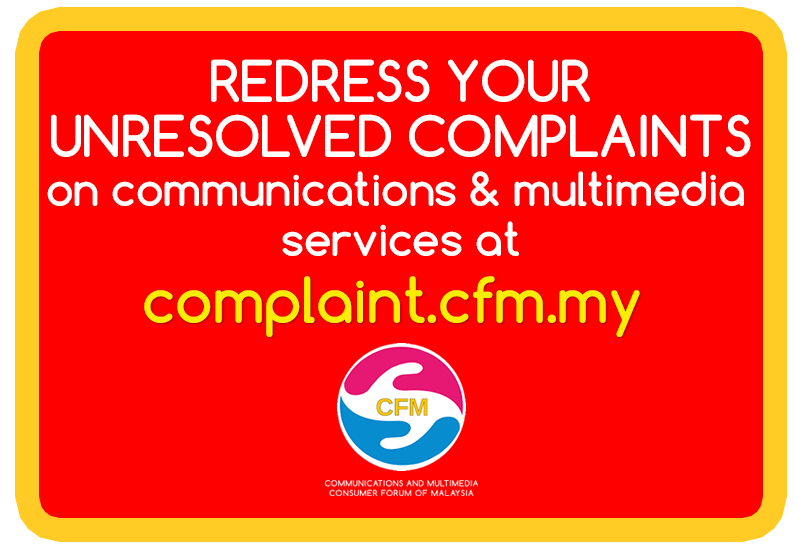
This basic FAQ provides information about how to terminate your contract with a Service Provider in the right way and how to file a complaint. | CFM
A contract is a legal agreement between you and your Service Provider.
For example, it explains:
● The service package you are subscribing to;
● all fees and charges;
● the minimum period of the contract;
● any penalty fees if you decide to terminate the service;
● anything else you, or the Service Provider, have to do;
You are entering a contract if you:
● sign a contract document;
● agree to the contract over the phone;
● agree to the contract with the Service Provider’s dealer or outlet.
- Does the Service Provider have service coverage where I live and work?
- What is the minimum contract period for my service?
- Is the contract flexible? Can I decide to change to a higher or lower plan if I want to without penalty?
- What is the monthly commitment payment that I need to pay (SST)?
- If I move or relocate, do I need to pay any fees or penalty charges?
- What is the credit limit for the plan that I am planning to subscribe to?
- What customer premise equipment will be provided and are there any additional charges for installation?
- How will the service offered benefit me?
- What should I do to obtain the service? (call, email, visit outlet, etc)
Remember to read everything carefully, including the fine print. Read and keep:
● The Critical Information Summary or
● The FAQ of the service from the Service Provider’s website.
Always compare prices and features so you know what different packages or services can do.
To terminate your Service Provider contract, you will need to check their website, call or walk into your Service Provider’s authorised centre, or email your service provider regarding termination, your contract, and billing cycle information to further smoothen the termination process. Also, ensure that all dues have been paid including payment of your last bill statement.
Each Service Provider has slightly different procedures for terminating a service account. You must be aware of your billing cycle in terms of where they start and end, and charges may apply if you were to end your contract earlier than stipulated. Also, note that prepaid accounts cannot transfer their credits over to the new Service Provider.
Depending on the procedures of each Service Provider, your contract termination process will take some time as your service provider needs to validate your details, bills, contract, terms, and conditions, and your last payment to further process your termination.
If you have terminated your services with your Service Provider, ensure that you get a final bill statement to determine if there are any outstanding charges from them and what they are. To avoid complications with any future Service Provider, you need to pay these outstanding charges in full. If the charges are prorated, consumers are responsible to pay for the outstanding amount. If this amount is not paid in full and on time, consumers are liable to be added to the CTOS list.
Consumers must ensure that they receive a letter stating the termination of service and that all dues have been paid in full from the Service Provider in addition to their last bill statement. Both are crucial pieces of evidence if there are any bill disputes in the future so keep them in a safe place.
If you are still having problems terminating your contract with your Service Provider or if the outcome is unsatisfactory, kindly lodge a complaint at the https://aduan.skmm.gov.my/ portal.
Hope this helps!
For more information & tips on communications and multimedia services by CFM, kindly visit consumerinfo.my.














